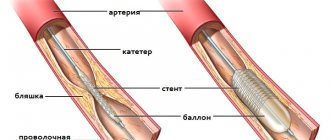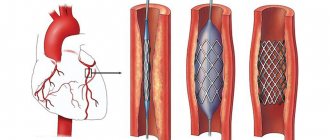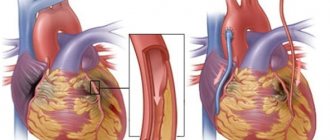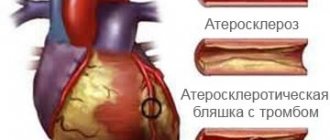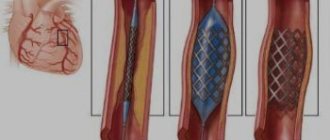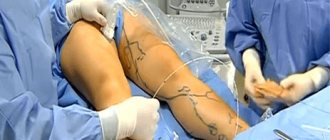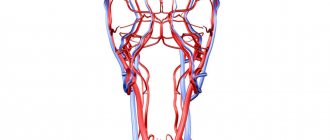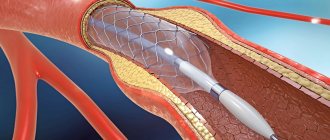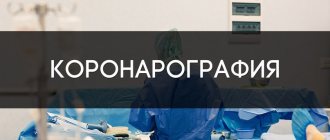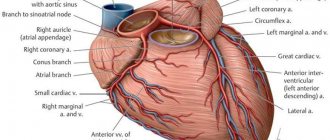You have had heart surgery - either coronary artery stenting, bypass surgery, or both. What does this mean in the grand scheme of things? This means that modern medical technologies have given you a second chance to find a healthy heart, you again have good blood supply to the myocardium, you can again live without heart pain, not be afraid of physical activity, and our goal is to preserve this second chance given to you for a healthy heart!
Despite surgical treatment and improved blood supply to the heart muscle, which should create favorable conditions for the effective restoration of the patients’ quality of life, expectations are not met - their ability to work and social activity continue to remain low. Many experts recognize the insufficient preparedness of outpatient medical institutions for the rehabilitation of cardiovascular patients. According to one of the leading cardiologists in St. Petersburg, after hospitalization such patients often end up in a network of outpatient institutions that are simply not ready to treat them.
If a patient after heart surgery does not take care of his health and does not visit a cardiologist, then a very high percentage of such patients end up on the operating table again after a few years, because heart disease is chronic and requires constant prevention of relapse!
For example, for 2010-2012 cardiovascular mortality among men 35-74 years old in Germany, Great Britain, Sweden, Belgium, Austria, Italy, Denmark and many other European countries was 100-200 people per 100,000 population. In Russia there are more than 1000 people (Circulation, Heart Disease and Stroke Statistics, 2015), which emphasizes the need for rehabilitation and secondary prevention in cardiac patients.
What is rehabilitation and how should it be carried out?
Rehabilitation - “rehabilis” - lat. restoration of ability.
Who is suitable for cardiac rehabilitation?
- patients with myocardial infarction
- after operations CABG, MCS
- after stenting
- after valve replacement
- after surgical treatment of arrhythmias
Rehabilitation after heart surgery is a set of medical and psychological measures aimed at:
- prevention of further development of the disease
- disability prevention
- improving quality of life
- maintaining the patient's ability to work
- returning him to social activity
Rehabilitation assistance is provided:
- regardless of the duration of the disease
- subject to the stability of the patient’s clinical condition
- in the presence of rehabilitation potential, i.e. physical, psychological, social resources of a person that will help him regain strength
- in the absence of contraindications to various techniques
- based on established diagnosis
Why is cardiac stenting done?
Stenting is carried out in order to restore the patency of the narrowed coronary (coronary) artery, which nourishes the heart, supplies it with oxygen, and thereby return the vital organ to normal functioning. Stenting is performed for coronary heart disease, including its life-threatening manifestation – myocardial infarction.
Stenting in some cases is a modern alternative to open surgery – coronary artery bypass grafting.
Stages of cardiac rehabilitation
There are three stages of rehabilitation after heart surgery and myocardial infarction:
- Stage I – hospital, where stenting/bypass surgery is performed according to indications
- Stage II – sanatorium-resort treatment
- Stage III – outpatient follow-up of the patient after heart surgery or heart attack
is especially important, since it is the longest in time, and, ultimately, determines the further development of the disease.
And if everything is clear with the first and second stages of rehabilitation - a hospital, where the patient is taken by ambulance, and, if possible, a sanatorium, then the third stage of rehabilitation, outpatient, the most important for maintaining health in the future, remains at the patient’s choice.
At the EXPERT Clinic you will be able to undergo the third stage of rehabilitation under the supervision of experienced specialists. In rehabilitation, a multidisciplinary approach is always used, i.e. interaction of specialists of various profiles, namely:
- cardiologist-rehabilitologist
- neurologist
- psychotherapist
- nutritionist
This provides various types of assistance to overcome the consequences of the disease, change lifestyle, reduce the impact of risk factors; assessment of the need and sufficiency, duration, consistency and effectiveness of the participation of each specialist at each specific point in time during the rehabilitation period.
If necessary, at the EXPERT Clinic you will be advised by a council of doctors of various profiles.
Third (outpatient) stage
The “Third Stage of Cardiac Rehabilitation” program at the EXPERT Clinic includes:
- appointment with a cardiologist
- Patient School – group classes with a cardiologist, which discusses the problems patients face and their solutions
- performing ECG, Echo-CG, 24-hour ECG and blood pressure monitoring according to indications
- general blood test, biochemical blood test (lipidogram, coagulogram, electrolytes, homocysteine, CRP, etc.)
- psychological testing
- consultation with a psychotherapist
- consultation with a neurologist
- nutritionist consultation
- genetic analysis of all cardiac markers, including the risk of sudden death, for the patient and his relatives
- genetic analysis of drug doses in the treatment of cardiovascular diseases
How long do they live after cardiac stenting?
Stenting does not cure coronary heart disease, but removes the consequences of this disease. The patient's life expectancy depends on many factors, including concomitant pathology. And also in what specific situation the stenting was performed. What is the extent of heart damage? But most of all, the duration depends on the patient’s own attitude. If he changes his lifestyle and follows all the doctor’s recommendations and prescriptions, he will live a long and fruitful life, counting in decades.
Cardiac rehabilitation results
The positive effects of cardiac rehabilitation at the EXPERT Clinic include:
- eliminating risk factors for coronary heart disease and reducing risk in general
- increasing physical activity
- smoking cessation
- normalization of blood pressure numbers
- weight loss
- improvement of lipid profile
- improving carbohydrate metabolism
- improvement of endothelial function
- slowing down the development of atherosclerosis and its clinical consequences
- improvement of psychophysical condition
- mobilization of patients to cooperate in the process of cardiac rehabilitation.
Dynamic (dispensary) observation is the main form of support for patients with chronic diseases in an outpatient setting. And this does not mean monitoring the natural development of the disease, as, unfortunately, often happens, but carrying out a set of secondary prevention and rehabilitation measures!
After surgical treatment, the patient is recommended to visit a cardiologist in the first days after discharge!
During the first year, visits to the doctor should be made every 4 months. Further, it is recommended to visit a cardiologist at least 2 times a year.
The goal of rehabilitation after cardiovascular accidents is to restore the patient’s physical and psychological health. Rehabilitation is indicated for all patients after surgery, regardless of the severity of the condition, both to gain self-confidence and strength, and to minimize the risk of re-exacerbation. Therefore, do not neglect your health and do not allow the disease to develop! Then you will get a chance to extend your life and improve its quality.
Medications after stenting
After stenting, it is imperative to take medications prescribed by the cardiologist, such as Plavix or Zilt, and aspirin, to prevent blockage of the stented vessels by a blood clot. The treating cardiologist will select the duration of administration and dosage individually.
And also, in the presence of concomitant diseases, for example hypertension - drugs that lower blood pressure, cholesterol-lowering drugs for high cholesterol levels in the blood, and other necessary medications that were taken before heart stenting.
FAQ
How long does rehabilitation take after heart surgery?
How long it will take to restore body functions depends on several factors: the severity of the initial condition, age, and motivation of the patient.
However, it is necessary to understand that, in fact, rehabilitation lasts for life, because the whole range of measures is aimed not only at restoring physical and psychological strength, but also at preventing repeated exacerbations of the situation. Without constant prevention, diseases of the cardiovascular system most often worsen.
How to help yourself with heart pain? What medications should you carry with you at all times?
If an attack of angina occurs (pain or burning behind the sternum, shortness of breath during physical and emotional stress, attacks last several minutes), then it is necessary:
- stop physical activity, sit down, calm down
- use nitroglycerin in the form of a spray (Isoket, Nitromint-spray), two or three doses under the tongue
- if the pain does not stop, then after 3-5 minutes you should repeat taking the drug
- If the pain does not go away within 15 minutes, you should chew 1 aspirin tablet with water and call an ambulance.
At what level should blood pressure numbers be maintained?
It is necessary to maintain blood pressure at a level less than 130/80 mmHg. High blood pressure – more than 140/90 mmHg. Art. - indicates the presence of hypertension. More than 180/110 mmHg. Art. indicates severe hypertension.
In order not to lose control of your blood pressure, you must take the medications prescribed by your doctor on time! For this:
- use alarm clock, beep on phone to remind
- Keep the tablets near your toothbrush, razor, or other items you use daily
- Place the tablets in jars indicating the time of administration; for this, you can purchase a special box with compartments at the pharmacy.
What physical activities are possible?
The amount of physical activity can be increased gradually.
6 weeks after surgery , moderate exercise is possible, such as vacuuming, walking the dog, morning exercises, hiking and fishing.
After 3 months, you can increase your activity - swimming, cycling, bowling, tennis, football. Snow removal or gardening at the dacha is allowed.
To maintain good health, moderate-intensity outdoor exercise for 30 minutes 3 times a week is recommended, and those patients who lead a sedentary lifestyle should begin with light exercise programs.
to sexual activity after 9-14 weeks. An exercise test must be performed under the supervision of a physician. If the doctor does not detect any symptoms of overload, then sexual activity is permitted.
How to eat properly if you have heart and vascular diseases?
The main goal of dietary nutrition is to reduce the level of atherogenic lipids in the blood to stop the development of atherosclerosis. Recommended levels of total cholesterol after heart surgery are less than 4.0 mmol/l, LDL - less than 1.8 mmol/l, TG less than 1.7 mmol/l, HDL for women more than 1.2; for men more than 1.0 mmol/l.
It is recommended to eat fruits and vegetables every day, sometimes lean meat, fish, olive and other oils. We allow alcohol in a dose of no more than 2 glasses of red wine per day for men, 1 glass for women. A nutritionist will help you create a detailed nutrition program.
Progress of percutaneous coronary intervention:
1. The site of exposure is treated with an antiseptic. The patient is given a local anesthetic and blood thinning medications to prevent the formation of blood clots. Small electrodes are attached to the chest to help the surgeon monitor the heart rhythm and pulse rate. 2. The operation is performed through the femoral artery (on the leg) or the radial artery (on the arm). Through a small puncture, a catheter-port for carrying instruments (introducer) is installed. Through it, a catheter is delivered to the mouth of the coronary artery, with the help of which surgical intervention is performed. 3. Angioplasty of the coronary arteries with stenting is performed in an angiographic operating room equipped with high-tech medical equipment. Contrast liquid is injected through the installed catheter. Using a coronary angiogram, the doctor evaluates the affected area. 4. A balloon catheter is passed to the site of the lesion, expanding the narrowed area. As the balloon inflates, the patient may feel discomfort in the chest. This is due to the blocking of blood flow through the artery - after the balloon is deflated, the unpleasant sensation stops. Stent implantation: 1. The stent, mounted in a closed state on a balloon, is advanced to the narrowed area of the artery. 2. The surgeon inflates the balloon in the affected area, thereby expanding the stent. 3. The wire remains in the artery to keep it open and improve blood flow to the heart. 4. The surgeon removes the catheter and makes control coronary angiograms to assess the strength of blood flow through the dilated artery. 5. The doctor applies a pressure bandage to the area of the leg or arm where the catheter was inserted.
Coronary stenting takes from 30 minutes to several hours, depending on the severity of atherosclerosis. As prescribed by your doctor, after surgery you should take medications that minimize the possibility of blood clots. For a video of stenting of cardiac vessels, follow the link.
Advantages and disadvantages of using stents
Stents are an outstanding invention that can save the lives of many patients. But it is not suitable for all patients suffering from stenosis. Like other medical instruments, stents have advantages and disadvantages.
Advantages:
- Minimally invasive, to eliminate the problem you do not need to make large surgical incisions on the body, but only a small hole on the body into which a catheter with a stent is inserted. Fast healing. The patient can be discharged on the 3rd day.
- Use of local anesthesia during surgery. There is no need to put a person to sleep. High percentage of successful cure (90%).
Flaws:
- There is a possibility of secondary stenosis, the appearance of blood clots and heart attacks. Occurs in 10% of patients.
- Complexity of the operation. The installation of stents in the heart is performed only by highly qualified surgeons.
- Some drug-eluting stents are expensive.
- Not all patients can undergo stenting - there are contraindications.
